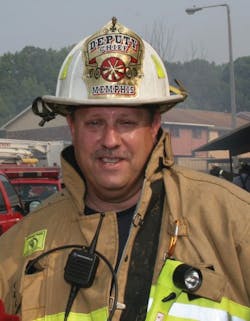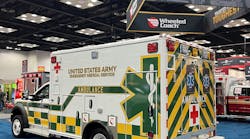Magen David Adom (MDA), the Israeli paramedic organization that has responded to thousands of acts of terrorism over the past 30 years, has long been an advocate of sending its paramedics into the “warm zone” to treat victims of terrorism. Now, the organization has endorsed the U.S. Fire Administration’s (USFA) release of a new document, “Fire/Emergency Medical Services Department Operational Considerations and Guide for Active Shooters and Mass Casualty Incidents.”
MDA’s announcement praising the proposed protocol change was made on the one-year anniversary of the massacre of 20 first-grade school students and six staff members at Sandy Hook Elementary School in Newtown, CT.
Learning the hard way
The U.S. is now starting to understand the benefits of treating victims early before they have time to exsanguinate (be drained of blood.). We had to learn our lessons the hard way after watching victims in the Columbine High School shooting in Colorado and other events bleed to death as they waited for medical help to arrive from staging areas.
Nothing highlighted of the necessity of getting help to victims bleeding to death during active-shooter events more than the death of Columbine High School business teacher and coach Dave Sanders on April 20, 1999. Within four minutes of when the shooting started by 18-year-old Eric Harris and 17-year-old Dylan Klebold, a call was made to 9-1-1. The teacher, Dave Sanders, was in the cafeteria telling students to stay down. He then headed upstairs to help others. As he rounded a corner, he was shot. Bleeding heavily, Sanders staggered into a science room.
Police officers arrived at the school within about five minutes of the first shots being fired. None of them entered the school. When student Evan Todd came out of the school, he told police that there were wounded students inside. He even told them how he had come out of the school. But no police officers went in that door, the shortest route to the library and to the science room, where Sanders lay wounded. When Todd came out that door, there were at least 20 police officers surrounding the school. But by the time the first SWAT team was assembled and geared up to enter the building, it was 12:06 ? 47 minutes after the shooting had begun. That SWAT team entered on the side of the building farthest from Sanders and from the library, where some survivors lay hidden among the dead.
While the crowd of reporters and worried parents grew outside the school, students and teachers in Science Room Three struggled to get help for the wounded teacher, who had been bleeding profusely since he was shot at 11:26.
Just before noon, student Mike Rotole put a sign in the window. It said, “One bleeding to death.” The Jefferson County Sheriff’s command post was well aware of Sanders’ condition and where he was. Since 11:42, a teacher in the room with Sanders had been on the telephone with operators at sheriff’s headquarters. And once Rotole put the sign in the classroom window, radio calls started coming from officers urging the command post to rescue him.
For 2½ hours, the first SWAT team cleared classrooms on the side of the school farthest from where most of the shooting had taken place. A second team evacuated students and staff from the rooms around the cafeteria. When the sheriff’s command post finally told that SWAT team to look for Sanders, they didn’t know where to go.
SWAT officers finally reached Sanders in Science Room Three at 2:42 ? more than three hours after he was shot. They evacuated the students right away, but held Sanders there to wait for a paramedic. That paramedic didn’t arrive for another 42 minutes. By the time a paramedic finally got to Sanders, at 3:24, he was already dead. Sanders had been conscious through most of the time he was awaiting help. Several others of those who were shot nearly bled to death.
The Wounds Data Munitions Effectiveness Team (WDMET) study was conducted by the Marines to look at the impact of casualty rate and wounds in an urban environment. Since World War II, the Navy and Marines have been involved in more than 200 operations, of which 90% have been in an urban environment. Of the many findings to come out of the study is that, once medical help reached a shooting victim and they received definitive care, they only had a 10% chance of dying.
The new USFA recommended policies call for fire and EMS personnel to enter the warm zone of an active-shooter incident in an organized fashion with law enforcement to secure a treatment area where victims can be brought to and treated immediately. Again, the thinking that the sooner the victims receive treatment, the better their chances of survival.
Sending fire and EMS personnel into the warm zones of active-shooter incidents goes against all conventional thinking of how we have operated for more than 40 years with the use of staging areas for violent incidents. However, the data and experience in Israel now show that our thinking was wrong and we need to change.
For more news and training on EMS, visit http://EMSWorld.com/.






